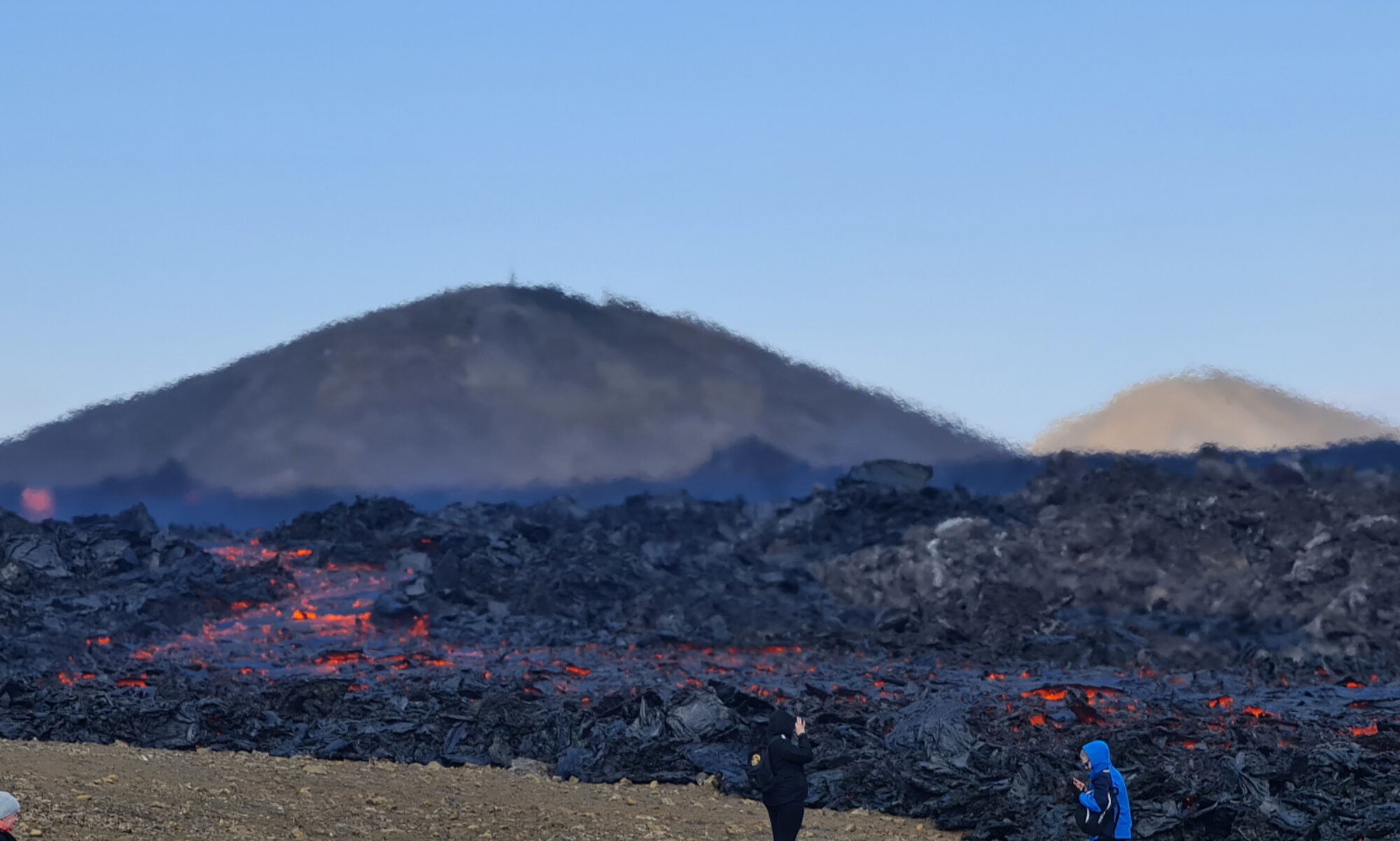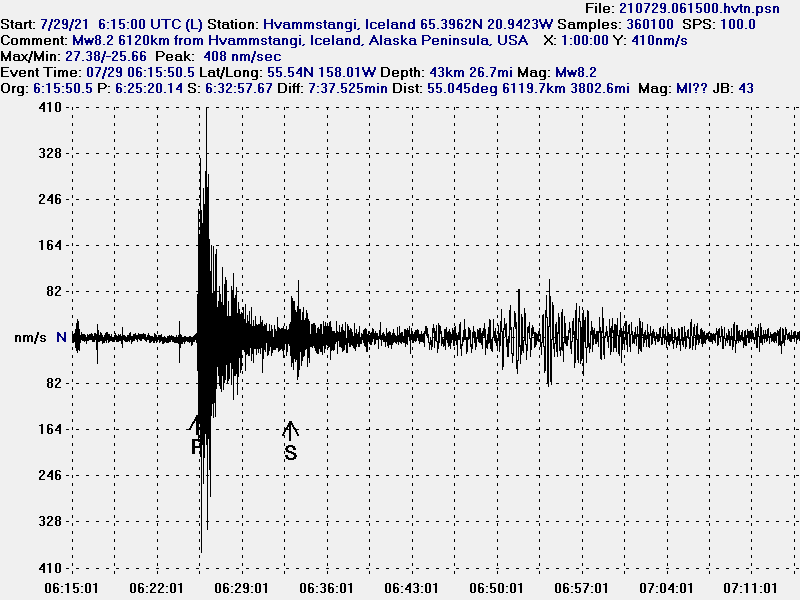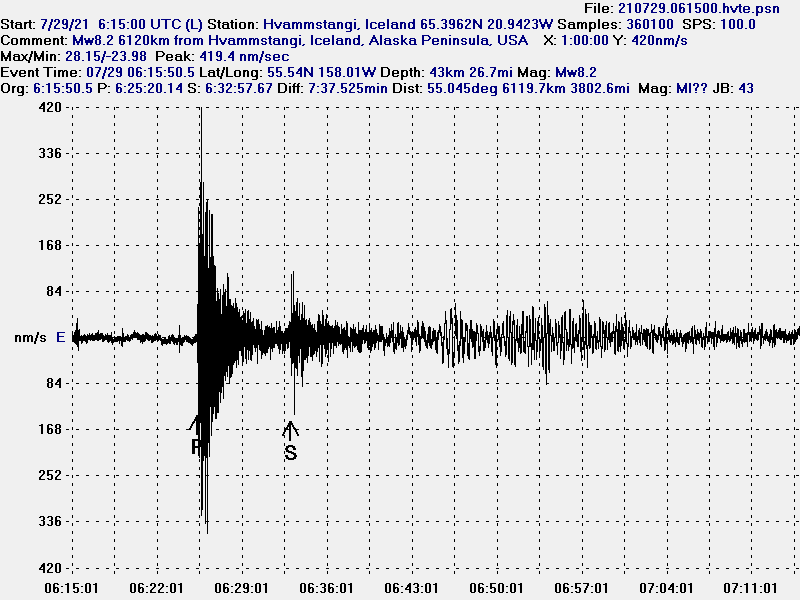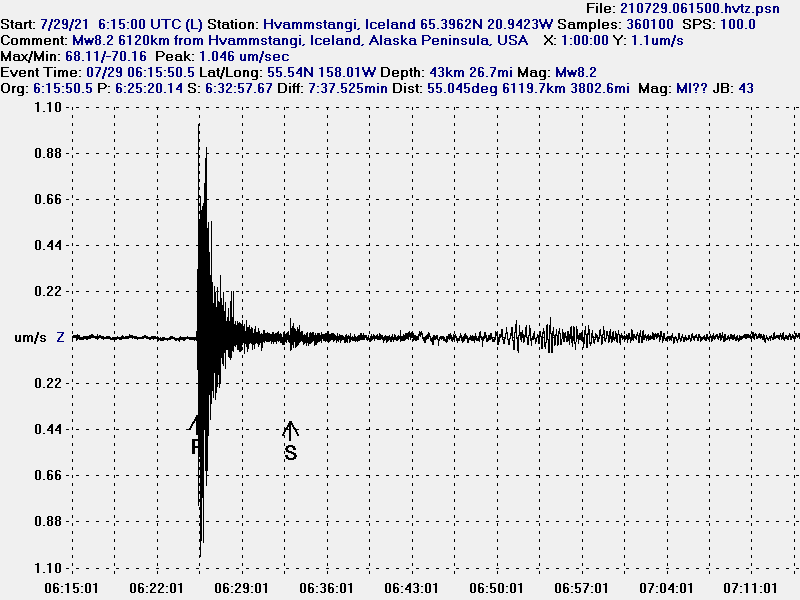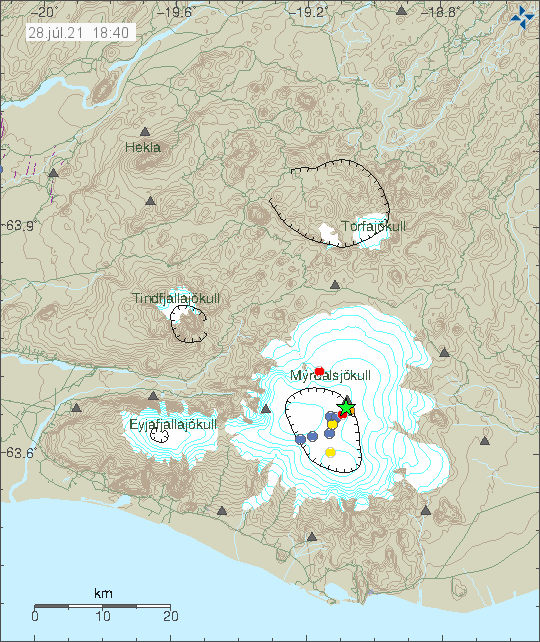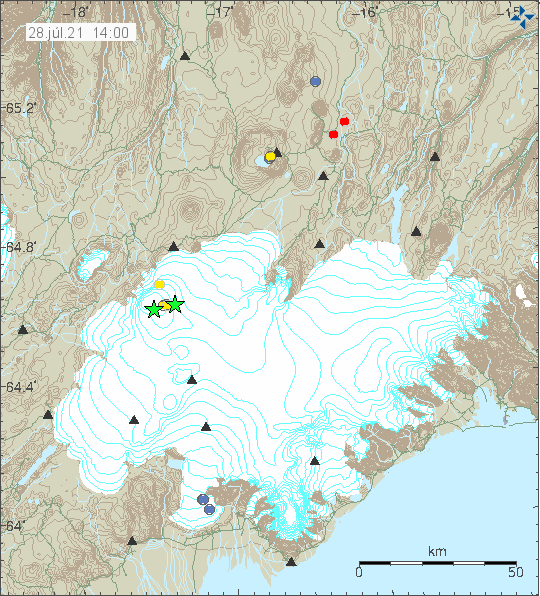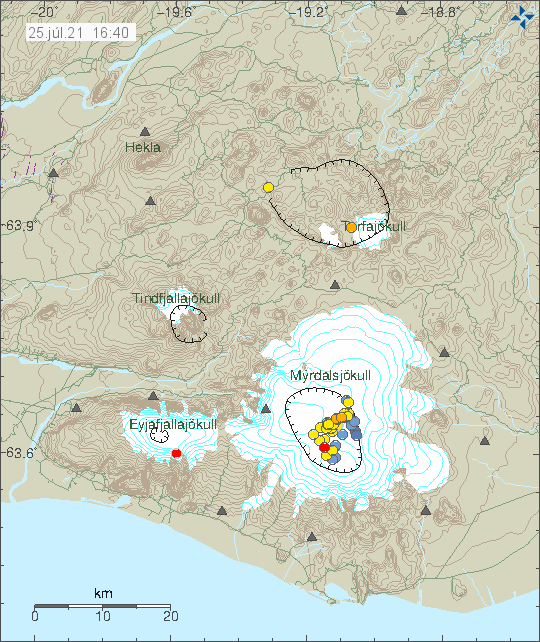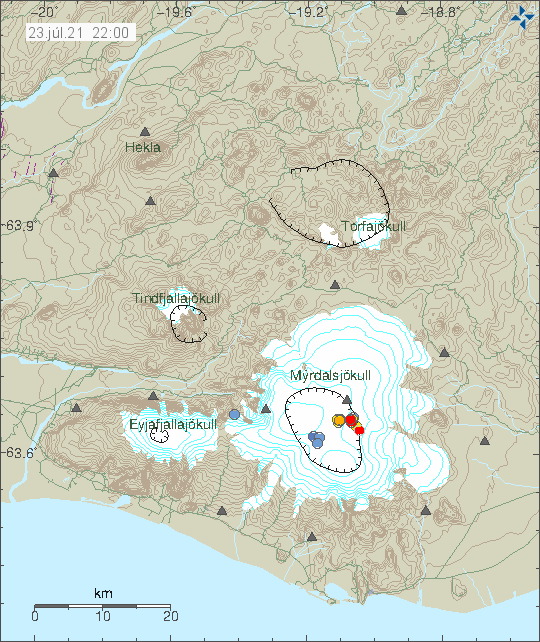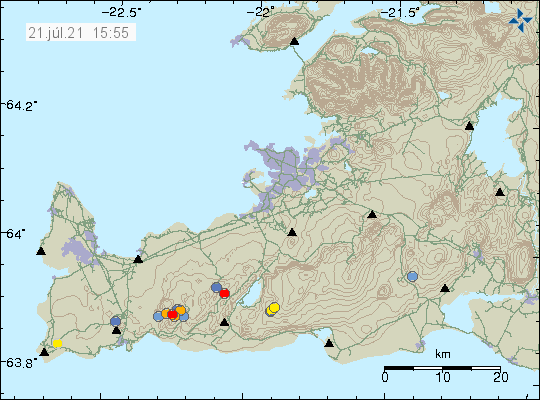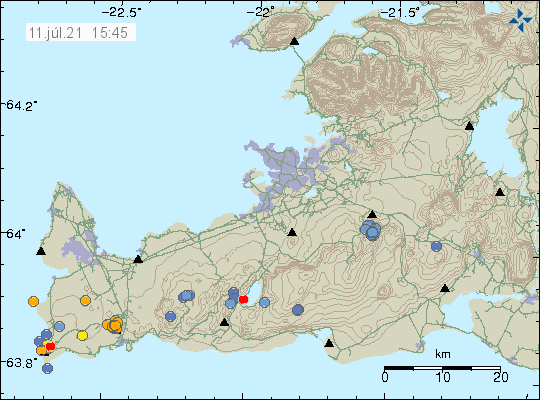Yesterday (29-July-2021) there was an earthquake activity in Katla volcano. Two strongest earthquakes had the magnitude of Mw3,2 at 19:20 and 19:22 UTC. Third largest earthquake at 19:28 UTC had a magnitude of Mw2,8.
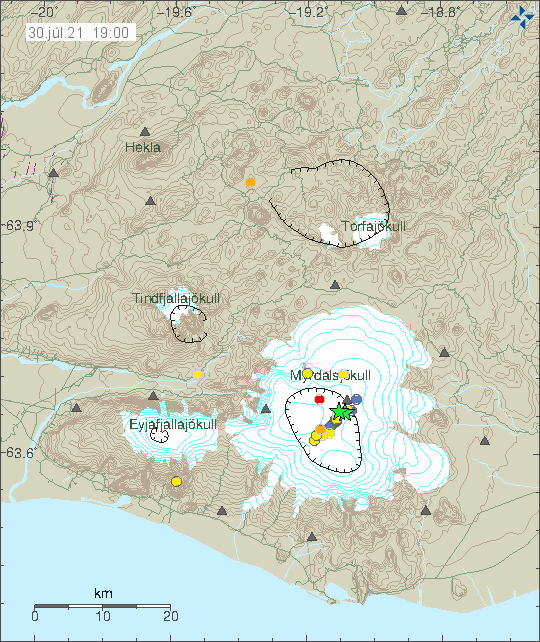
It is unclear if this earthquake activity is just summer activity or part of a larger activity. At this time I am not expecting an eruption since the earthquake activity is currently too low for such event to about to take place. There are going to be thousands of earthquakes in Katla volcano before an large eruption. Until that happens. I do not worry about this activity.
